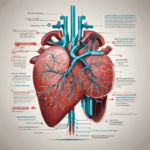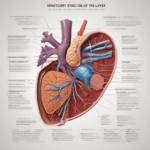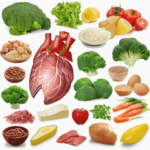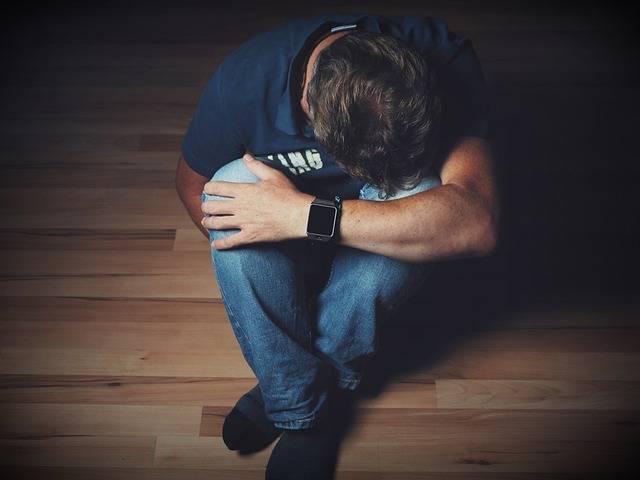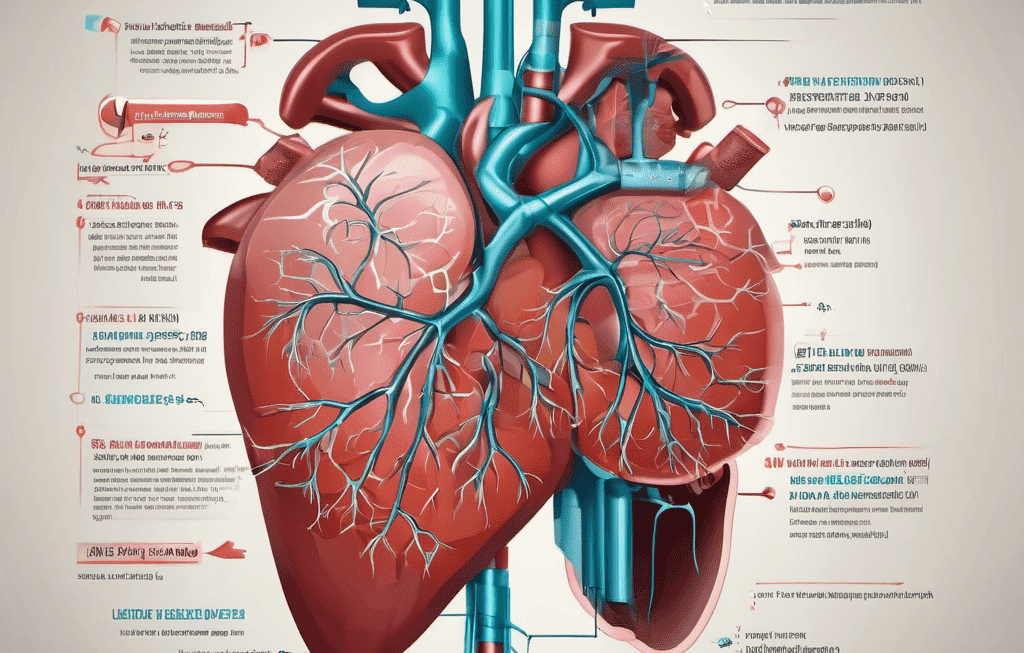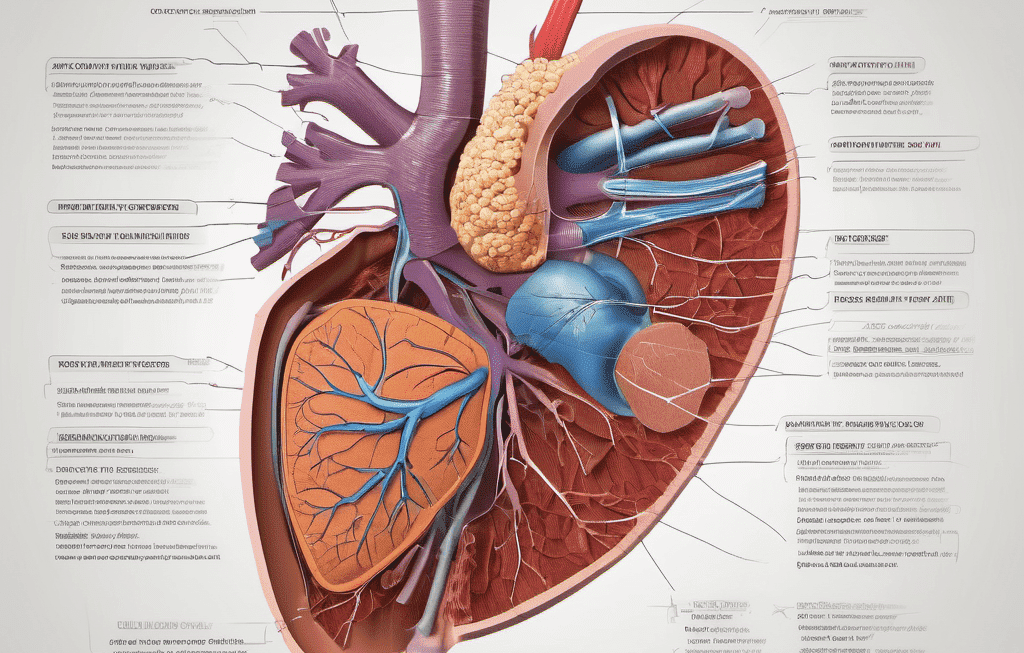Introduction:
Depression is a mental health disorder characterized by persistent feelings of sadness, hopelessness, and a lack of interest or pleasure in daily activities. It goes beyond the typical ups and downs of life and can significantly impact a person’s thoughts, emotions, and physical well-being. Symptoms may include changes in appetite and sleep patterns, fatigue, difficulty concentrating, and thoughts of self-harm or suicide.
Understanding depression is crucial for both individuals and society at large. Recognizing the signs and symptoms allows for early intervention and appropriate treatment, which can significantly improve the prognosis for those affected. Additionally, fostering awareness helps reduce the stigma associated with mental health issues, encouraging open conversations and providing support to those struggling with depression. Overall, a deeper understanding of depression contributes to a more compassionate and informed society, promoting mental health and well-being.
Types of Depression:
There are many types of depression some common types of depression are:
1. Major Depressive Disorder (MDD):
Major Depressive Disorder is a pervasive form of depression characterized by persistent and profound feelings of despondency, hopelessness, and a noticeable loss of interest or pleasure in once-enjoyed activities. Individuals grappling with MDD often contend with disruptions in appetite, sleep patterns, energy levels, and concentration. The impact of MDD on daily functioning is considerable, and it may manifest physically through symptoms such as headaches and digestive issues.
2. Persistent Depressive Disorder (Dysthymia):
Dysthymia represents a chronic form of depression, enduring for at least two years in adults. Although its symptoms may be less severe than MDD, dysthymia exerts a prolonged influence on an individual’s ability to function optimally. It is not uncommon for individuals with dysthymia to experience intermittent periods of major depression interspersed with milder manifestations.
3. Bipolar Disorder:
Formerly known as manic-depressive illness, bipolar disorder introduces a dynamic element to depression with alternating cycles of extreme mood swings. Depressive episodes mirror the symptoms of major depression, while manic episodes involve heightened mood, increased energy, and impulsive behavior. This oscillation between emotional extremes characterizes the unique nature of bipolar disorder.
4. Seasonal Affective Disorder (SAD):
Seasonal Affective Disorder is a depression variant tied to specific times of the year, typically manifesting in the fall and winter when sunlight diminishes. Symptoms include fatigue, irritability, prolonged sleep, and cravings for carbohydrates. Treatment often involves light therapy and lifestyle adjustments, such as enhanced exposure to natural light.
5. Psychotic Depression:
Psychotic depression merges severe depressive symptoms with psychosis, encompassing hallucinations or delusions. Individuals may grapple with false beliefs or auditory hallucinations not experienced by others. The therapeutic approach often involves a combination of antidepressant and antipsychotic medications.
6. Postpartum Depression (PPD):
Postpartum Depression affects some women following childbirth, marked by intense feelings of sadness, anxiety, and fatigue. Hormonal fluctuations, sleep deprivation, and the challenges of motherhood contribute to PPD’s onset. Treatment encompasses various modalities, including therapy, support groups, and, in certain cases, medication.
7. Premenstrual Dysphoric Disorder (PMDD):
Premenstrual Dysphoric Disorder stands as a severe manifestation of premenstrual syndrome (PMS), featuring pronounced mood disturbances. These symptoms emerge during the luteal phase of the menstrual cycle and encompass severe mood swings, irritability, and feelings of hopelessness. Managing PMDD may involve medication, lifestyle adjustments, and psychotherapeutic interventions.
8. Atypical Depression:
Atypical depression is marked by mood reactivity, where individuals experience temporary mood improvements in response to positive events. Symptoms include increased appetite, weight gain, excessive sleep, and a sensation of heaviness in the limbs. Atypical depression adds nuance to our understanding of depressive disorders by presenting unique features in contrast to other forms.
It’s imperative to acknowledge that individuals may contend with a blend of these depression types, and the boundaries between them are often fluid. Seeking professional guidance and support is crucial for an accurate diagnosis and the formulation of an effective treatment plan.

Causes of Depression:
1. Biological Factors:
-
- Genetics: Research on the heritability of depression suggests that multiple genes may contribute to its development, with a heritability estimate ranging from 30-40% (Sullivan et al., 2000). Understanding specific genetic markers associated with depression allows for targeted research into personalized treatment approaches (Smoller et al., 2019).
- Neurotransmitter Dynamics: The intricate interplay of neurotransmitters involves complex signaling pathways. Dysregulation in these systems, such as serotonin deficiency, has been linked to mood disorders, prompting the development of medications targeting these neurotransmitters (Belmaker & Agam, 2008; Nutt, 2008).
2. Psychological Factors:
-
- Trauma and Stress Response: Chronic stress and traumatic experiences have been shown to affect the neurobiological mechanisms involved in stress response, contributing to the development of depression (Kendler et al., 2003). Identifying individual responses to stressors aids in tailoring therapeutic interventions (Monroe & Harkness, 2011).
- Personality Dimensions: Personality traits like neuroticism and introversion have been associated with increased vulnerability to depression (Kotov et al., 2010). Exploring the role of personality in shaping coping strategies and resilience informs therapeutic strategies (Lahey, 2009).
3. Environmental Factors:
-
- Social Ecology: Social support acts as a protective factor against depression, influencing neurobiological mechanisms and promoting resilience (Cohen & Wills, 1985). Investigating the dynamics of social networks and their impact on mental health aids in designing community-based interventions (House et al., 1988).
- Socioeconomic Context: The socioeconomic context significantly influences mental health outcomes. Individuals facing economic hardship may experience chronic stressors, highlighting the need for social policies addressing health disparities (Lorant et al., 2003; Evans, 2003).
4. Medical Conditions:
-
- Biopsychosocial Nexus: The biopsychosocial model recognizes the complex interplay of biological, psychological, and social factors in health and illness (Engel, 1977). Chronic illnesses contribute to the psychological burden, necessitating integrated healthcare approaches (Rugulies, 2002).
- Hormonal Orchestra: Hormonal imbalances, such as those seen in hypothyroidism, can impact mood regulation. Understanding the bidirectional relationship between endocrine factors and depression informs treatment strategies (Bauer et al., 2014).
5. Medications and Substance Abuse:
-
- Pharmacological Nuances: Medications like corticosteroids and interferons, while crucial for certain medical conditions, can have neuropsychiatric side effects, emphasizing the importance of monitoring mental health during treatment (Schak, 2000).
- Substance-Induced Complexities: Substance abuse alters neurotransmitter functioning and neural pathways, contributing to the complexity of co-occurring substance use and depression. Integrated treatment models address both issues concurrently (Volkow et al., 2011).
6. Cognitive Patterns:
-
- Cognitive Culprits: Cognitive distortions, identified by Aaron T. Beck, contribute to the maintenance of depressive symptoms. Cognitive-behavioral therapy (CBT) focuses on identifying and challenging these patterns to facilitate cognitive restructuring (Beck, 1967, 1979).
- Ruminative Loops: Ruminative thinking, characterized by persistent dwelling on negative thoughts, is associated with prolonged depressive episodes. Mindfulness-based interventions and cognitive restructuring aim to disrupt and redirect these ruminative loops (Nolen-Hoeksema, 1991; Watkins, 2008).
7. Childhood Experiences:
-
- Developmental Foundations: Adverse childhood experiences, as explored in the ACEs study, have long-lasting impacts on mental health outcomes. Early interventions that address childhood trauma contribute to preventing the onset of depression later in life (Teicher et al., 2003; Felitti et al., 1998).
8. Hormonal Factors:
-
- Endocrine Symphony: Thyroid hormones, crucial for regulating metabolism and energy, play a role in mood regulation. Understanding the links between hormonal imbalances, particularly in conditions like hypothyroidism, and depression informs targeted treatment approaches (Bauer et al., 2014).
Incorporating these nuanced details into research and clinical practice facilitates a comprehensive understanding of depression’s etiological factors and guides the development of tailored interventions for individuals based on their unique profiles.

Signs and Symptoms:
1. Persistent Sadness or Low Mood:
The persistent emotional burden in depression extends beyond typical feelings of sadness. It involves a pervasive low mood that colors the individual’s outlook on life. This emotional state often becomes a constant companion, affecting thoughts, behaviors, and overall well-being.
2. Loss of Interest or Pleasure (Anhedonia):
Anhedonia, a hallmark of depression, represents a profound loss of interest or pleasure in activities that were once sources of joy. This goes beyond mere disinterest; it’s a pervasive emotional flatness where even previously fulfilling experiences no longer evoke positive emotions.
3. Changes in Sleep Patterns:
Depression disrupts the delicate balance of sleep. Insomnia, characterized by difficulty falling or staying asleep, or hypersomnia, excessive sleepiness even after a full night’s rest, are common. Sleep disturbances contribute to the overall fatigue and exacerbate cognitive difficulties.
4. Weight and Appetite Changes:
The complex relationship between depression and appetite leads to significant weight changes. Some individuals experience a diminished appetite, leading to weight loss, while others engage in emotional eating, resulting in weight gain. These changes further impact self-esteem and body image.
5. Fatigue and Loss of Energy:
Fatigue in depression extends beyond mere tiredness; it’s a pervasive sense of weariness that persists despite rest. Individuals may struggle to summon the energy for routine activities, making even simple tasks feel exhausting.
6. Difficulty Concentrating:
Cognitive impairment in depression affects concentration and memory. Individuals may find it challenging to focus on tasks, follow through with work or academic responsibilities, and make decisions. This cognitive fog contributes to feelings of frustration and inadequacy.
7. Feelings of Worthlessness or Guilt:
Distorted self-perception often involves intense feelings of worthlessness and inappropriate guilt. Individuals may berate themselves for perceived failures, contributing to a negative self-dialogue that perpetuates the depressive cycle.
8. Agitation or Restlessness:
While depression is often associated with lethargy, some individuals experience a paradoxical increase in psychomotor activity, manifesting as restlessness or agitation. This internal discomfort may lead to physical restlessness, pacing, or an inability to sit still.
9. Irritability:
Beyond the classic presentation of sadness, depression can also manifest as irritability. This emotional reactivity can strain relationships as individuals become more sensitive to perceived slights or frustrations.
10. Physical Symptoms:
Depression’s impact isn’t limited to emotional and cognitive realms; it extends to the physical. Unexplained aches, pains, headaches, and gastrointestinal discomfort may accompany the emotional distress, emphasizing the mind-body connection.
11. Suicidal Thoughts or Behaviors:
In the most severe cases, individuals with depression may experience suicidal thoughts or engage in self-harming behaviors. It’s crucial to recognize the urgency of these symptoms and seek immediate professional help.
12. Social Withdrawal:
Social withdrawal in depression represents a significant shift from typical social behavior. Individuals may isolate themselves due to feelings of inadequacy or a sense of burden on others. This withdrawal intensifies the feelings of loneliness and isolation.
13. Changes in Psychomotor Activity:
Psychomotor changes capture the observable aspects of behavior in depression. Slowed speech, movements, and an overall decrease in physical activity are reflective of the pervasive lethargy that characterizes the condition.
14. Seasonal Patterns (Seasonal Affective Disorder):
Seasonal Affective Disorder (SAD) introduces a temporal component to depression. In this subtype, symptoms follow a seasonal pattern, often worsening in fall and winter due to reduced exposure to sunlight. The specific triggers may include changes in light, temperature, and social routines.
Understanding the nuanced presentation of these signs and symptoms aids in early recognition and intervention. Depression is a multifaceted condition, and a comprehensive assessment by a mental health professional is essential for accurate diagnosis and the development of an effective treatment plan tailored to the individual’s unique experiences.
Conclusion:
In conclusion, depression is a multifaceted mental health condition, characterized by persistent sadness, cognitive impairments, and physical symptoms that significantly impact an individual’s overall well-being. The intricate interplay of biological, psychological, and environmental factors underscores the diverse manifestations of this condition. Recognizing the nuanced signs and symptoms is crucial for early intervention, as depression’s effects extend beyond transient moods to profoundly affect daily functioning and relationships. Seeking professional help is essential, and the destigmatization of mental health challenges is pivotal in encouraging individuals to access necessary support. A holistic approach that integrates psychotherapy, medication, social support, and lifestyle adjustments is instrumental in managing depression. By fostering awareness, open dialogue, and advocating for accessible mental health resources, society can contribute to creating an environment that prioritizes mental well-being and supports individuals on their path to recovery.
Frequently Asked Questions (FAQS)
Is depression a sign of weakness?
No, depression is a complex mental health condition influenced by various factors.
Can depression be cured completely?
While complete cure may vary, many individuals successfully manage and overcome depression with the right support and treatment.
Are medications the only solution for depression?
No, therapy, lifestyle changes, and a support system play crucial roles in managing depression.
How can I help a friend with depression?
Offer a listening ear, encourage professional help, and be patient and understanding.
Is depression a common global issue?
Yes, depression affects people worldwide, transcending geographical and cultural boundaries.
1. What is depression?
Depression is a common and serious mental illness that negatively affects how you feel, the way you think and how you act. It can lead to a variety of emotional and physical problems and can decrease your ability to function at work and at home.
2. What are the symptoms of depression?
Symptoms of depression can vary from person to person but often include:
-
- Feeling sad or down most of the day, nearly every day
- Loss of interest or pleasure in activities once enjoyed
- Changes in appetite – weight loss or gain unrelated to dieting
- Trouble sleeping or sleeping too much
- Loss of energy or increased fatigue
- Increased restlessness or slowed movement
- Feelings of worthlessness or guilt
- Difficulty thinking, concentrating or making decisions
- Recurrent thoughts of death or suicide
3. What causes depression?
- There is no single cause of depression, but it is thought to be a combination of biological, psychological and social factors. These may include:
Brain chemistry: Changes in the levels of certain chemicals in the brain, such as serotonin, norepinephrine, and dopamine, may play a role.
Genetics: People with a family history of depression are more likely to develop the condition.
Life events: Traumatic or stressful life events, such as the death of a loved one, a job loss, or a relationship breakup, can trigger depression.
Medical conditions: Some medical conditions, such as hypothyroidism, chronic pain, and cancer, can increase the risk of depression.
Substance abuse: Alcohol and drug abuse can trigger or worsen depression.
4. How is depression treated?
Depression can be effectively treated with a variety of approaches, including:
Psychotherapy: This involves talking to a therapist about your thoughts, feelings, and behaviors. There are different types of psychotherapy, such as cognitive-behavioral therapy (CBT) and interpersonal therapy (IPT), that have been shown to be effective for depression.
Medication: Antidepressant medications can help to improve the levels of certain chemicals in the brain that are associated with mood regulation.
Lifestyle changes: Regular exercise, healthy eating, and getting enough sleep can all help to improve mood and reduce symptoms of depression.
Support groups: Joining a support group can connect you with others who understand what you are going through and can offer support and encouragement.
5. How can I get help if I think I am depressed?
If you are experiencing symptoms of depression, it is important to seek professional help. Talk to your doctor or a mental health professional. They can assess your symptoms and develop a treatment plan that is right for you.
6. Is depression a disability?
Depression can be considered a disability if it significantly impairs your ability to work or perform other major life activities. If you have depression and believe it is interfering with your life, you may be eligible for disability benefits.
7. Can depression get worse if left untreated?
Yes, depression can worsen if left untreated. It can lead to more severe symptoms, increased risk of suicide, and difficulty functioning in daily life. Early diagnosis and treatment are important for managing depression effectively.
8. Is depression contagious?
No, depression is not contagious. However, it can be affected by your environment and relationships. Spending time with people who are positive and supportive can help improve your mood and outlook.
9. What are some helpful resources for people with depression?
There are many resources available to help people with depression. Here are a few:
National Institute of Mental Health: https://www.nimh.nih.gov/
Depression and Bipolar Support Alliance: https://www.dbsalliance.org/
American Foundation for Suicide Prevention: https://afsp.org/
The Jed Foundation: https://jedfoundation.org/
Crisis Text Line: Text HOME to 741741
10. How can I help someone with depression?
There are many things you can do to help someone with depression. Here are a few tips:
Listen to them without judgment.
Offer support and encouragement.
Help them connect with professional help.
Educate yourself about depression.
Be patient and understanding.

